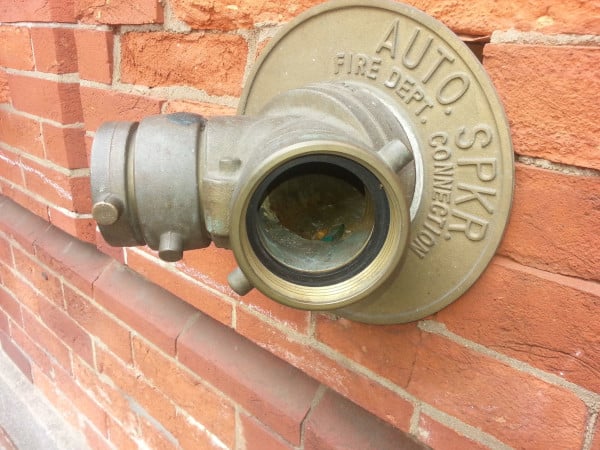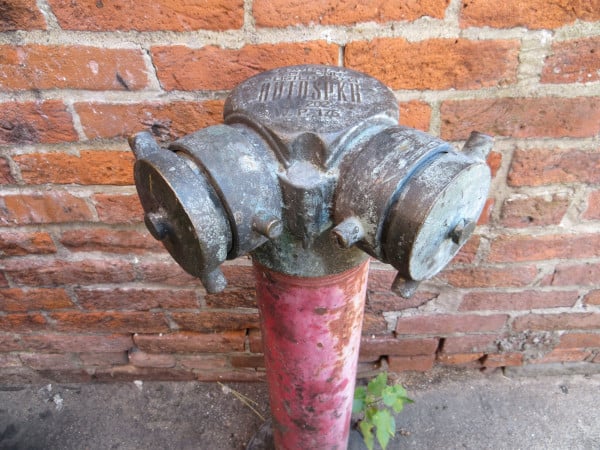
Stolen FDC? It happens all the time.
Unfortunately, stolen fire department connections (FDCs) are something we hear about all the time. These bodies are made of brass, and lots of it, which make them susceptible to thieves who sell metal for scrap.
At this point, you will need to replace it. This isn't always easy, as there are tons of differences amongst available FDCs. Let's ensure you find a correct replacement by identifying exactly what you need.
Identifying Your FDC
When browsing for FDCs, you may notice there are "Exposed", "Recessed", or "Concealed" options. Since yours was stolen, it likely hung off of the side of the building's exterior, or on a vertical pipe outside, meaning it was "Exposed". You're already a step ahead in identifying a replacement!
Step 1. Residential or Commercial Building?
Residential and Commercial FDCs can be identified by their number of inlets. Most residential FDCs are single inlet, while most commercial FDCs have two inlets. Ocasionally, a commercial building will use a single inlet and a residential may use an FDC with two inlets, but these situations are few and far between. It all comes down to the water flow and fire protection demand that your building requires.

Two Inlets

Single Inlet
If you're here, you likely noticed your FDC missing, which means you probably know what your stolen body looked like. Use the images above to identify which type you'll need according to your old FDC.
Another way to confirm is by looking out the outlet size (where the pipe is exposed) where the FDC used to be. If the outlet is 4 in. or 6 in., you will need a two inlet FDC. If the outlet is 1-1/2 or 2-1/2 in., you will need a single inlet FDC.
If you need a single inlet FDC, the only thing you need to know now is what size is required. Skip to step 3.
Step 2. Orientation: Angled vs. Straight
Straight FDCs are those typically found on the side of buildings, and are relatively more common. In Straight FDCs, the inlet(s) and the outlet are on the same plane and stick out horizontally.
Angled FDCs are typically found on a vertical pipe or in tight/awkward spaces where an angle is required. The body takes a 90-degree turn between the outlet and the inlet(s). In most cases, the outlet (attached to the pipe) will be facing the ground, while the inlet(s) will stick out horizontally.
See the examples below.

Straight

Angled
Step 3. Inlet Size and Threads
In step 1, we identified whether we needed an FDC with two inlets or a single inlet body.
Single Inlet
If you need a single inlet body, all you have to do is measure the size of the outlet (the pipe where the FDC used to be). Single Inlet FDCs have the same size outlet and inlet – meaning if you measure a 1-1/2 in. outlet, then you'll need a 1-1/2 in. single inlet FDC. All single inlet FDCs available are National Standard Thread (NST).
You can view both sizes of our single inlet FDCs here.
Two Inlets
Many jurisdictions use FDCs with 2-1/2 in. National Standard Thread (NST) connections. However, not all do—New York, for example, use 3 in. FDCs with New York Fire Department (NYFD) threading. And cities as varied as Cleveland, Denver, and Louisville each use their own specialized threads.
However, in most cases, you will need a 2-1/2 in. NST fire department connection. Check with your local Authority Having Jurisdiction (AHJ) if you are unsure.
Step 4. Double vs. Single Clapper
If have a double clapper FDC, when you are doing hydrostatic testing and you pressurize the system (or charge the system whenever), you can maintain the pressure in a siamese FDC that has a double clapper when you remove the hose, since both clappers snap shut. That cant happen with a single clapper.
The most common application of separately clappered FDC bodies is in a standpipe scenario where you have three or more inlets. In that case, it is necessary to have each one separately clappered so that, in the event you hook up a single hose, you don't have water flowing out of the other openings.
Congrats! You have found your compatible FDC.
Use the search bar below. You may be presented with multiple options to select your preferred finish. Once you get to the product page, select an FDC Identification Plate, along with a plug or cap for your FDC body from the available options.
Having trouble selecting between a plug or breakable cap?
FDC plugs provide robust protection, are reusable, and offer better security, but can slow down access in emergencies, as breakable caps are designed to break easily during an emergency. However, breakable caps may not protect your FDC from debris and are NOT reusable, once broken. It's always best to weigh the pros and cons of each or check with a local expert before ultimately making a decision.
If you are still unsure, consult with your Authority Having Jurisdiction (AHJ).
